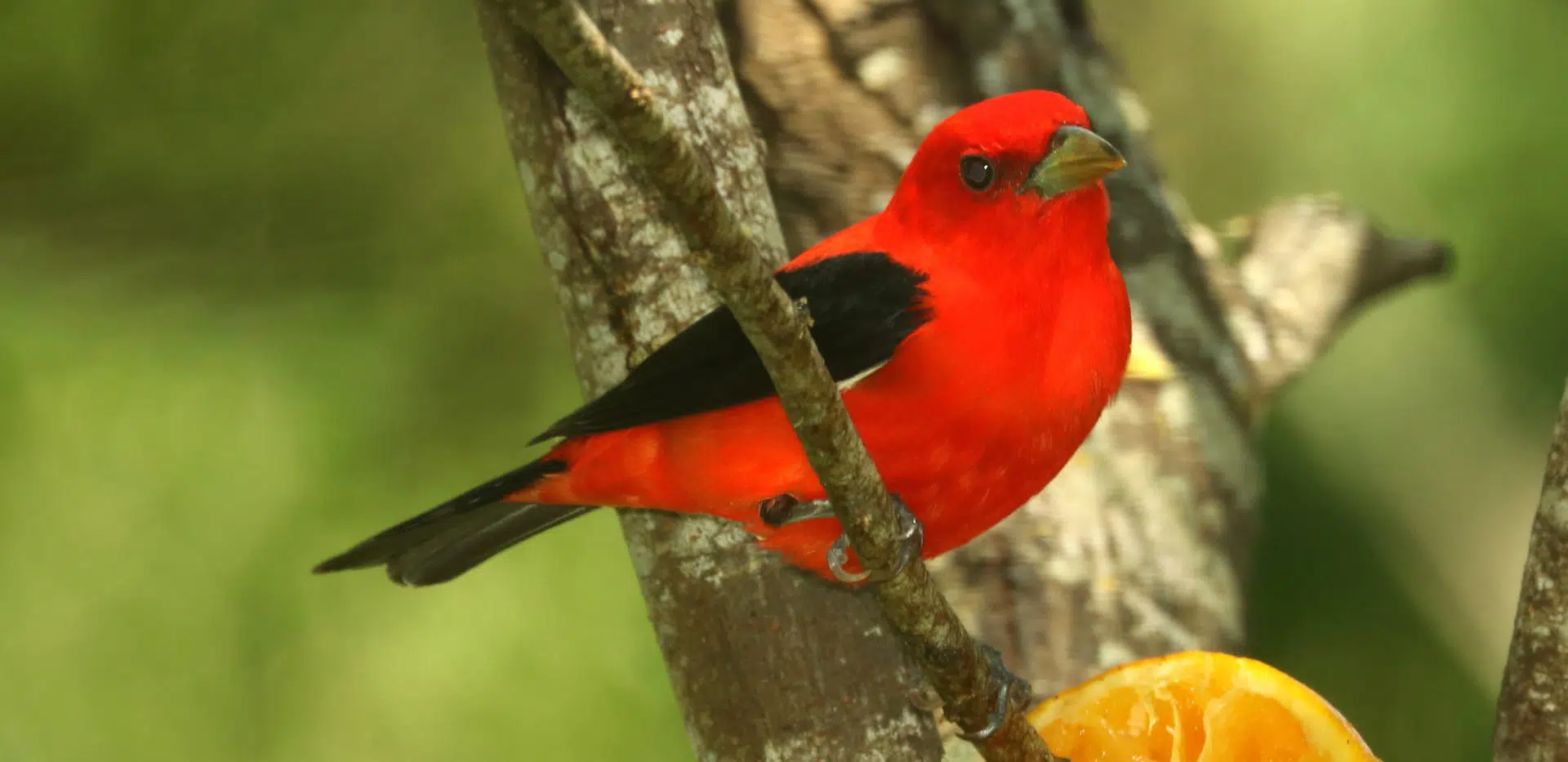Nature Profile
Birds
Scarlet Tanager
Piranga olivacea

Scarlet Tanager
Voice: Song: 4-5 raspy phrases that sound like a robin with a sore throat Call: chick-burr
Despite the males striking color scarlet tanagers can be difficult to spot in the summer. They spend most of their time in the dense canopy of mature deciduous forests and mixed deciduous-coniferous forests in eastern North America. During the fall and spring, they migrate through similar forest habitats and can be seen in less dense areas including gardens and parks. They winter in mature forest in northern and western South America.
Scarlet tanagers eat mainly invertebrates including ants, moths, butterflies, beetles, flies, cicadas, leafhoppers, dragonflies, dobsonflies, snails, and spiders. They glean insects from trees, catch insect in flight and rarely pick insects from the ground. They swallow small prey but will kill larger prey by squishing them onto hard surfaces like branches before consuming them. In addition to invertebrate scarlet tanagers will also eat fruit and tender buds off trees depending on the time of year.
In the spring male scarlet tanagers are the first to arrive to establish breeding territories. They attract females by vocalizing and stretching out on a branch below the females to show off the bright scarlet. Once a pair is established female scarlet tanagers chose a tree nest on a horizontal branch away from the trunk in a cluster of leaves site, thirty to fifty feet above the ground. They nest in mature deciduous trees such as maple, oak, beach and will on occasion nest in eastern hemlock. Females build a flimsy nest in three to four days. The asymmetrical nest is loosely woven with twigs, grasses, stems, bark strips, roots and pine needles. It’s lined with fine plant materials. Females lay three to five pale blue brown speckled eggs. Females incubate the eggs for 13-14 days. Young are tended to by both parents and leave the nest 15 days after hatching. Both parents feed until the fledglings are 25 days old.
According to the North American Breeding Bird Survey, scarlet tanager populations have declined by approximately 14% between 1966 and 2014. Their estimated global breeding population is 2.2 million. Change in land use and fragmentation could be responsible for declining populations over time. Forest fragmentation exposes nests to cowbird parasitization and predation. Preserving and restoring breeding, migrating and wintering large tracts of mature forest will help the scarlet tanager thrive.
Best Location to View: Old Valley Trail, Woodland Trail
Range: North America, South America
Size: Small
Wingspan: Small




